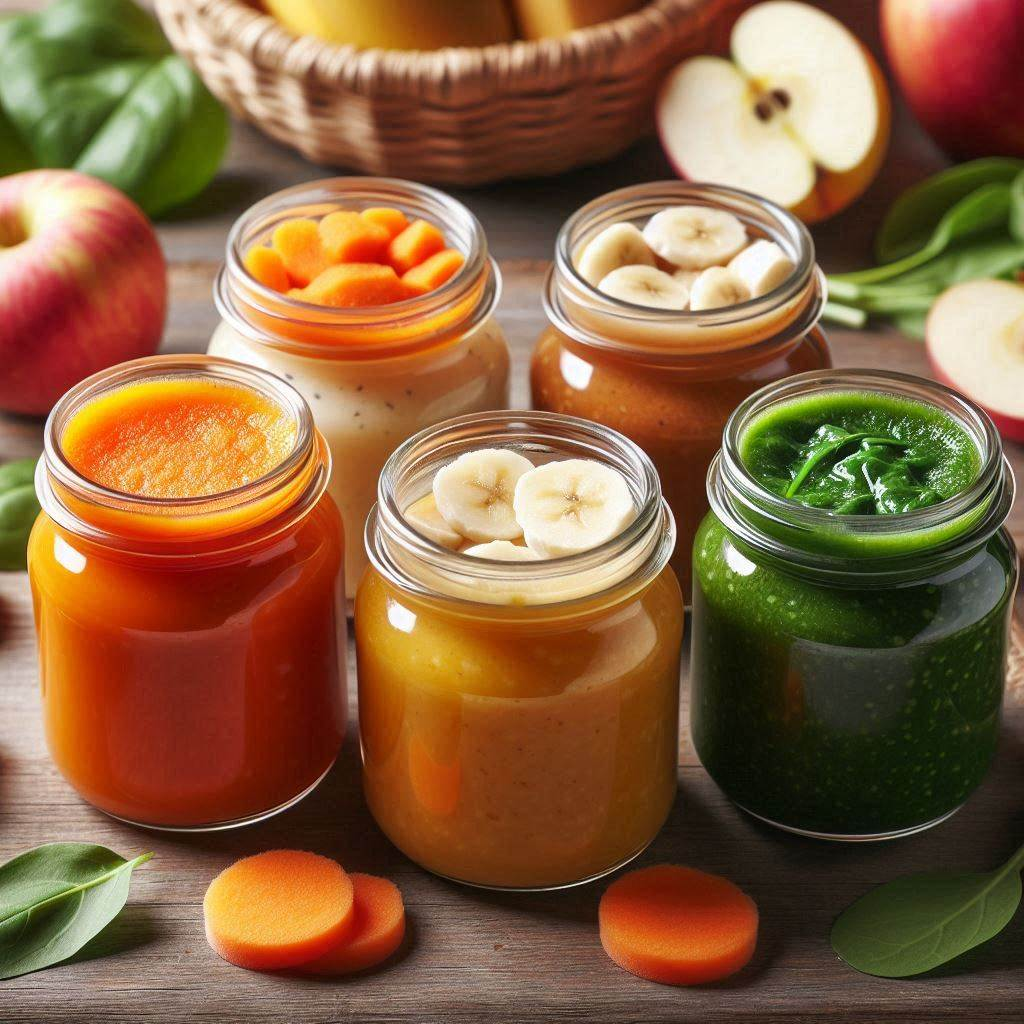First 100 Foods for Baby Guide
Starting your little one on solid foods is an exciting milestone in their growth journey. As a parent, you want to give your baby the best start possible when it comes to nutrition. That’s where the concept of introducing the first 100 foods for baby comes in. This guide will walk you through everything you need to know about this important phase, from why it matters to how to do it safely and enjoyably.
Quick Answer: What are the first 100 foods for baby?
The first 100 foods for baby typically include a wide variety of fruits, vegetables, grains, proteins, and dairy products introduced gradually between 6 months and 1 year of age. This approach aims to develop a diverse palate, provide essential nutrients, and potentially reduce the risk of food allergies.
Why Introduce 100 Foods Before Baby Turns One?
You might wonder, “Why bother with so many foods so early?” Well, there are some pretty good reasons:
- Builds a broad palate: Exposing your baby to lots of flavors early on can help prevent picky eating later.
- Boosts nutrition: Different foods provide various nutrients essential for your baby’s growth and development.
- May reduce allergy risks: Early introduction of diverse foods, including common allergens, might help lower the chances of developing food allergies.
- Encourages adventurous eating: Babies who try many foods early often grow into more adventurous eaters as kids and adults.
When to Start the Food Adventure
Most babies are ready to start solid foods around 6 months old. But how do you know if your little one is ready? Look for these signs:
- Can sit up with little or no support
- Has good head control
- Shows interest in what you’re eating
- Has lost the tongue-thrust reflex (no longer automatically pushes food out of their mouth)
- Can move food to the back of their mouth with their tongue
Remember, every baby is unique. Some might be ready a little earlier, others a bit later. It’s always a good idea to chat with your pediatrician before starting solids.
Read more: Which Emotion is the Last to Develop in an Infant?
How to Introduce the First 100 Foods for Baby
Now that you know why and when to start, let’s talk about how to introduce these foods. Here are some tips to make the process smooth and fun:
- Start simple: Begin with single-ingredient purees or soft, well-cooked foods.
- Go slow: Introduce new foods one at a time, waiting a few days between each new food to watch for any allergic reactions.
- Mix it up: Offer a variety of flavors, textures, and food groups.
- Be patient: It can take multiple tries before a baby accepts a new food. Don’t give up!
- Make it fun: Eat together as a family and let your baby explore food with their hands.
The First 100 Foods for Baby: A Comprehensive List
Here’s a breakdown of foods you can introduce to your baby, organized by food group:
Fruits
- Banana
- Avocado
- Apple (cooked and pureed)
- Pear (cooked and pureed)
- Peach
- Mango
- Papaya
- Plum
- Blueberries (mashed)
- Strawberries (mashed)
Vegetables
- Sweet potato
- Carrot
- Peas
- Green beans
- Squash
- Broccoli
- Cauliflower
- Spinach
- Zucchini
- Pumpkin
Grains
- Oatmeal
- Rice cereal
- Quinoa
- Barley
- Whole wheat bread (small, soft pieces)
- Pasta (small shapes, well-cooked)
Proteins
- Chicken (pureed or very finely chopped)
- Turkey (pureed or very finely chopped)
- Beef (pureed or very finely chopped)
- Fish (well-cooked, bones removed)
- Eggs (well-cooked)
- Tofu
- Lentils (well-cooked and mashed)
- Beans (well-cooked and mashed)
Dairy
- Yogurt (plain, full-fat)
- Cheese (soft varieties, grated or in small pieces)
- Cottage cheese
A Personal Touch: My Baby’s First Food Adventure
When I started introducing solid foods to my daughter, Emma, I was both excited and nervous. I remember the first time I offered her mashed banana. She made the funniest face! But after a few tries, she couldn’t get enough of it. It was amazing to watch her explore new tastes and textures.
One day, I decided to try giving her some mashed avocado. To my surprise, she loved it from the first bite! It quickly became a staple in our house. Watching Emma’s face light up as she discovered new foods was truly magical. It reminded me that this journey isn’t just about nutrition – it’s about joy, discovery, and bonding.
Read more: How to Bathe an Infant Without a Tub: Safe and Simple Methods
Safety First: Foods to Avoid
While exploring the first 100 foods for baby, there are some foods you should avoid:
- Honey: Wait until after your baby’s first birthday to introduce honey, as it can cause infant botulism.
- Cow’s milk as a drink: While dairy products like yogurt and cheese are okay, cow’s milk shouldn’t replace breast milk or formula until after 12 months.
- Choking hazards: Avoid whole nuts, popcorn, hard candies, and large chunks of food.
- Added salt and sugar: Your baby’s kidneys can’t handle much sodium, and added sugars aren’t nutritionally necessary.
Dealing with Picky Eaters
Sometimes, babies can be picky about trying new foods. Don’t worry – this is totally normal! Here are some tips to help:
- Keep trying: It can take up to 15-20 exposures for a baby to accept a new food.
- Lead by example: Eat the same foods you’re offering your baby. They learn by watching you!
- Mix it up: Try offering the same food prepared in different ways.
- Stay calm: If your baby refuses a food, don’t make a big deal out of it. Just try again another day.
Allergies and the First 100 Foods for Baby
Introducing allergens early can actually help prevent food allergies. Common allergens to introduce include:
- Peanut butter (thinned out)
- Egg (well-cooked)
- Fish
- Soy
- Tree nuts (finely ground or as butter)
- Wheat
Always introduce these foods one at a time and watch for any signs of an allergic reaction. If you have a family history of food allergies, talk to your pediatrician before introducing these foods.
Making Mealtimes Fun
Introducing the first 100 foods for baby should be an enjoyable experience for everyone. Here are some ways to make mealtimes fun:
- Eat together: Make meals a family affair. Babies learn a lot by watching others eat.
- Get messy: Let your baby explore food with their hands. It’s great for sensory development!
- Use fun tools: Colorful plates, cups, and utensils can make mealtimes more exciting.
- Sing songs: Make up silly songs about the foods you’re eating.
Tracking Your Baby’s Food Journey
Keeping track of the foods your baby has tried can be helpful. You might want to:
- Use a food diary or app to record new foods and any reactions
- Take photos of your baby trying new foods – it’s a great memory to look back on!
- Share your progress with your pediatrician at check-ups
First 100 Foods for Baby Thoughts
Introducing your baby to their first 100 foods is an exciting journey. It’s a time of discovery, growth, and bonding. Remember, every baby is different, so go at your little one’s pace. Enjoy the messy faces, the funny reactions, and the proud moments as your baby explores the world of food.
By offering a variety of foods early on, you’re setting the stage for a lifetime of healthy eating habits. So grab that spoon (or let your baby grab it!), and start this delicious adventure. Here’s to the first 100 foods and beyond!

Jessica Winter is a passionate parenting blogger with two years of experience guiding new and seasoned parents through the joys and challenges of raising babies. Her insightful posts blend personal anecdotes with expert advice to offer a warm and practical perspective on modern parenting.

